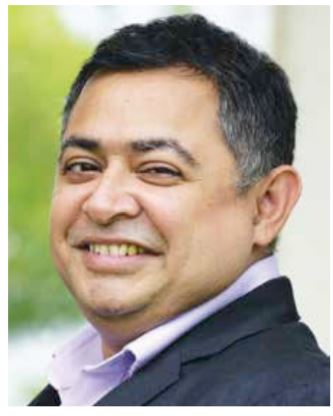 We utilise data in two key ways – to find out what customers are doing and hence make their experience richer and more friction-free – and also to add value to our opportunities. Data is used to study the experience, understand the bottlenecks and possible friction points to analyse paths taken and not taken to make the customer experience better, says Sankarson Banerjee, Chief Information Officer, RBL Bank, in conversation with Elets News Network (ENN).
We utilise data in two key ways – to find out what customers are doing and hence make their experience richer and more friction-free – and also to add value to our opportunities. Data is used to study the experience, understand the bottlenecks and possible friction points to analyse paths taken and not taken to make the customer experience better, says Sankarson Banerjee, Chief Information Officer, RBL Bank, in conversation with Elets News Network (ENN).
After three years a stint at National Stock Exchange (NSE), how challenging it is to be part of RBL bank?
It’s quite exciting and a different challenge. NSE was a huge engineering challenge, in many cases stretching the limits of what current hardware and software delivery. The volume of transactions that NSE handles is amongst the largest in the world in capital markets, and the concerns were about latency and throughput. However, NSE was much narrower in its focus – it had fewer lines of business than a full-service bank. RBL does not compare to NSE on transaction throughput but has all the complexity of a full-service bank with multiple lines of business, diverse types of transactions, more intricate risk management and a much larger balance sheet. Banking is also much more consumer-facing – everyone needs a bank account, while only a percentage has capital market accounts. In addition, NSE was the dominant player while RBL is an emerging challenger; quite a different kind of excitement. The challenge here is all about agility, cost-to-serve and competitive advantage against much stronger rivals.
How your bank is utilising data and analytics to improve the consumer experience?
We utilise data in two key ways – to find out what customers are doing and hence make their experience richer and more friction-free – and also to add value to our opportunities. Banks have a wide variety of customer interactions, and data is used to study the experience, understand the bottlenecks and possible friction points to analyse paths taken and not taken to make the customer experience better. As the user journey becomes more involved, analytics becomes a key tool in continuously crafting and improving the journey.
There was traditional method used to survey the focus groups, but they were slow, expensive and prone to human bias. Today, we use data of past behaviour instead, which allows us to react much faster.
What steps are you undertaking to strengthen RBL Bank’s cybersecurity footprint?
This is a continuous process, especially for a digital-first Bank. We work with tool providers, consultants and internal teams to constantly strengthen and review this.
A big thrust at the moment is automation that removes dependence on humans – avoiding mistakes and alertness issues. Another challenge is to benchmark across non-banking as well as banking since digital vulnerabilities tend to be common across multiple businesses. To this end, we have worked with global consulting firms to benchmark our efforts and fix our security posture. We see partnerships as a crucial element of our Cybersecurity strategy. Today, we cannot wall ourselves off into secure private gardens without losing customers, so collaboration and partnerships are the only way to tackle the global and widespread menace of cybersecurity. It’s no longer about buying and implementing tools but better continuous monitoring and response – coordinated with partners, competitors, and governments.
Tell us about the new technology deployments in the company.
We’ve taken recent steps into new technologies for hyper-convergence and micro-segmentation. I personally feel that hyper-convergence and micro-segmentation will become a critical technology for us as we maintain an on-premise portion of the business but need to simplify the management and maintainability of these systems.
We need to get to much higher server -to people ratios in our data centres, and our bet on hyper-convergence combined with micro-segmentation will allow us to do that. Unlike traditional systems that require an array of specialists across servers, networks, firewalls, and storage to create the full environment, hyper-convergence with micro-segmentation provides a level of automation that allows one engineer (in some cases even the application owner itself ) to define, deploy and maintain the full footprint. We have also made recent investments in cutting edge application performance monitoring and Machine Learning driven analytics.
We want to extract much more performance from our systems than our competitors can, and the way to do it is to ensure every tiny bottleneck is diagnosed and remediated as we continue our growth journey. This year, we did nearly double the transactions overall as compared to last year, but not only did we need to upgrade hardware, we actually ran our batches in less than half the time. Performance tools backed by ML-driven analysis has enabled us to do this at scale.
What innovations have you planned for the rest of 2019?
This is for us a year of enabling the growth that our core business is driving –cost-effective, faster and more efficient. We’re focused on technologies and innovations targeted to giving us dramatic productivity leaps in our run and transform initiatives. The idea is to move to a different productivity curve itself.
Elets The Banking and Finance Post Magazine has carved out a niche for itself in the crowded market with exclusive & unique content. Get in-depth insights on trend-setting innovations & transformation in the BFSI sector. Best offers for Print + Digital issues! Subscribe here➔ www.eletsonline.com/subscription/













